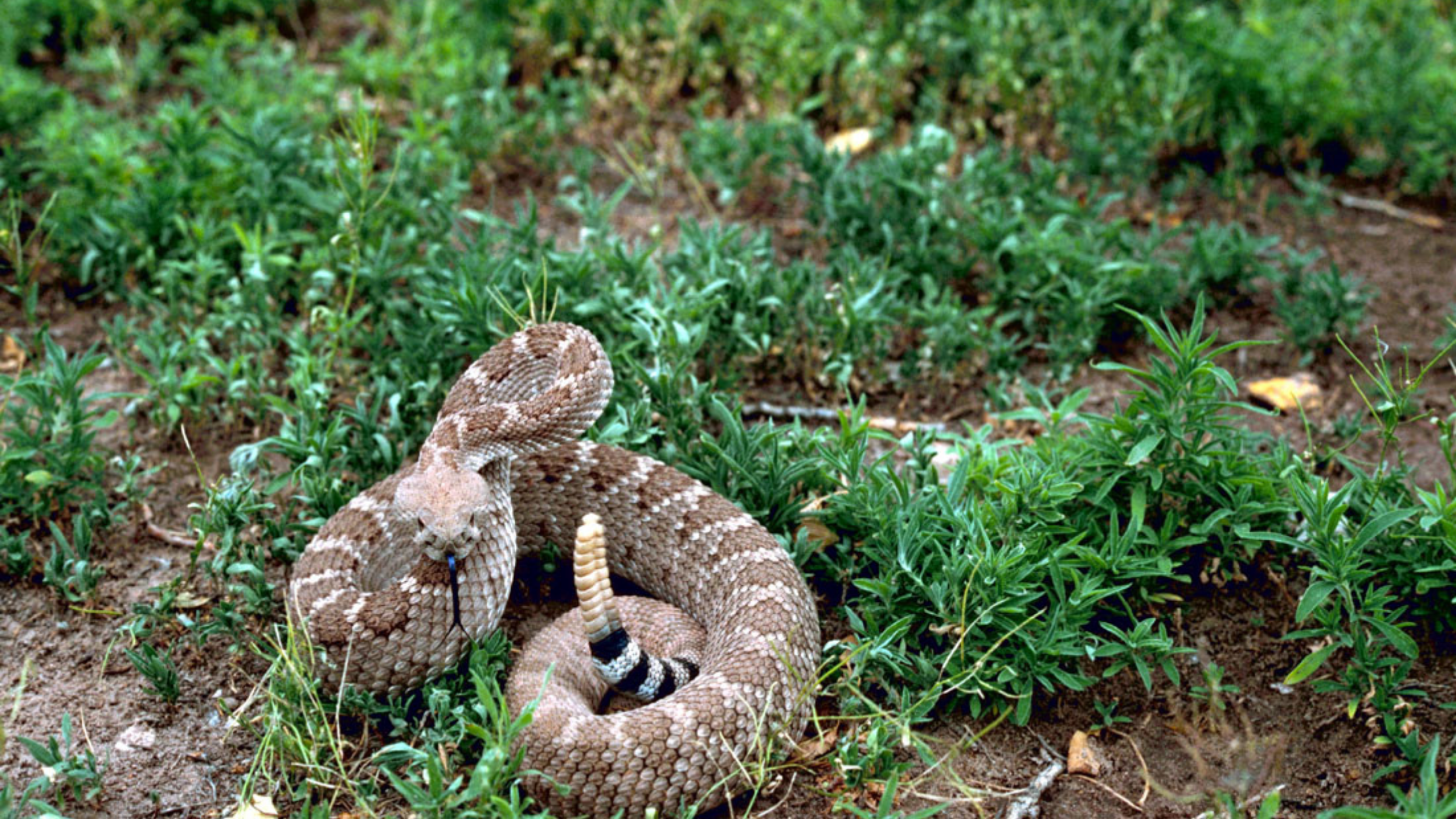Posted: April 14, 2022
Our Wildlife of the Week – 2022 Week 14…
Meet the “Western Diamondback Rattlesnake”!
(Crotalus atrox)
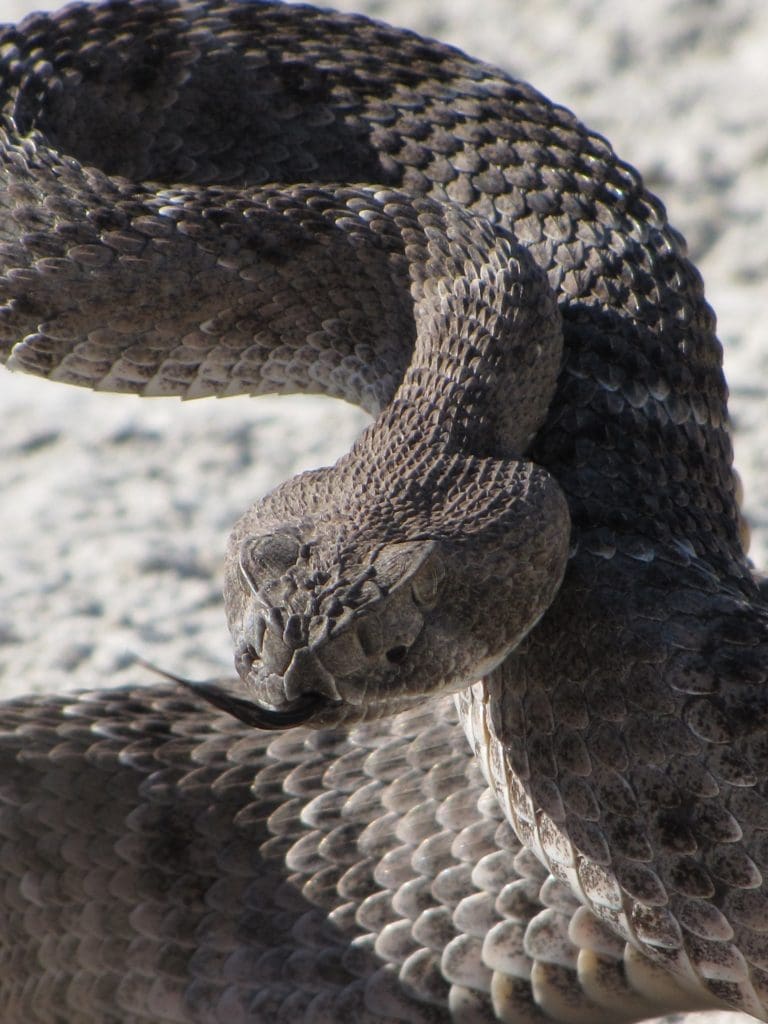
Western Diamondback Rattlesnake Physical Description
The body length of the Western Diamondback Rattlesnake is about 4.9 feet (1.5 meters) and they can weigh up to 14.7 lbs (6.7 kg). The Western Diamondback Rattlesnake has a plump body, short tail, and a broad triangular head. Like all Pit Vipers, it has a pit organ, which is situated in an indentation of the upper jaw, between the nostril and eye. The pit is about 3/16 in (5 mm) deep, with an outer and inner chamber separated by a thin membrane. The membrane senses very slight temperature differences between the snake’s inner and ambient temperatures.1
The Western Diamondback Rattlesnake also has the self-named rattle on the end of the tail. Each link of the rattle is the remnant of a molted skin. As the snake molts, the last scale loosens but does not fall off. As the snake ages, new rattles are formed with each molt, while old rattles simultaneously fall off. This species has long, tubular fangs, which are characteristic of venomous snakes.1
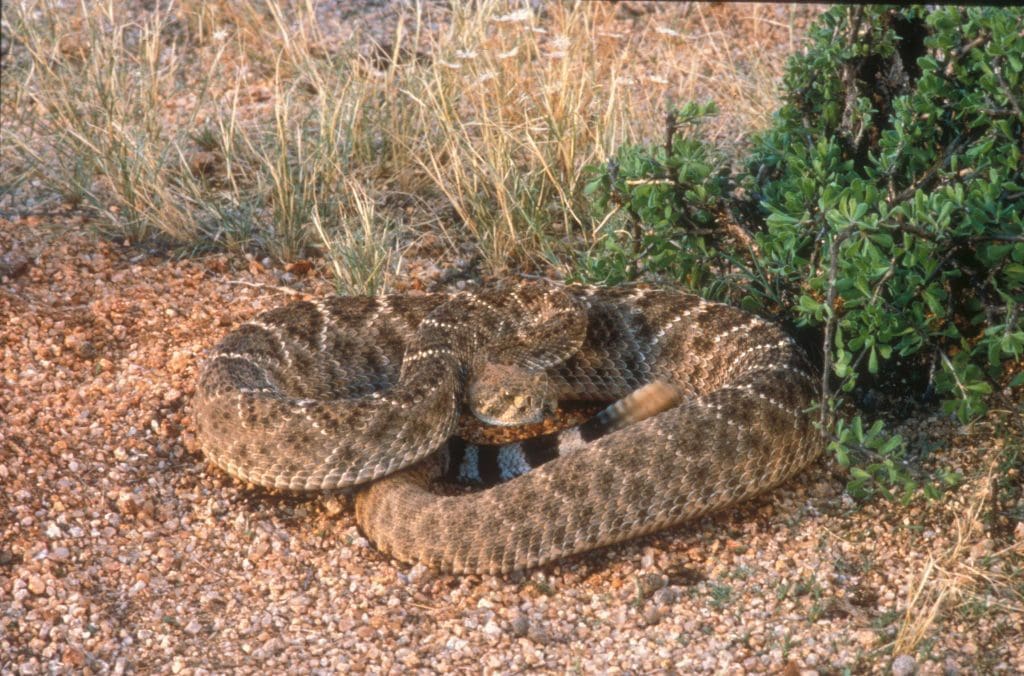
The Western Diamondback Rattlesnake can be a yellowish gray, pale blue, or pinkish ground color. The diamond shapes down its length are dark with pale white borders. The tail is white with jet-black rings. The head markings include a pale oblique band from nostril to upper labials, and a similar but narrower band behind the eye.1
SPONSORED ADVERTISEMENT
Western Diamondback Rattlesnake In Action
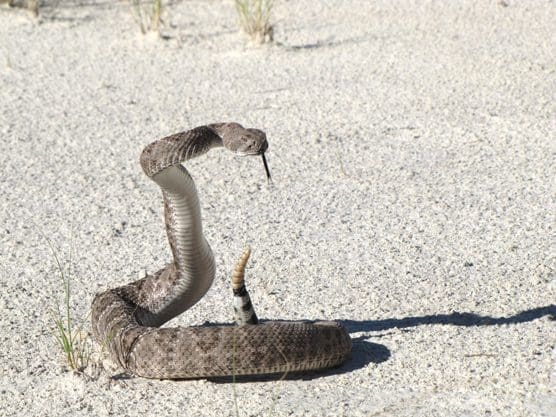
Western Diamondback Rattlesnakes are aggressive and easily excitable. This species causes more fatalities than any other snake in the United States. They are not apt to attack offensively, but are defensive. Their rattles are used as a warning sign. Their rattles can activate at 40 to 60 cycles a second. The Western Diamondback assumes the threat posture by slightly flattening the body, rolling it together into a spiral, lifting the forebody from the ground into an S-shape, and keeping the tail raised and the rattle rattling.1
Ritualized fighting has been observed in Western Diamondback Rattlesnake males. Fighters lift their forebodies up 31.5 in (80 cm) in the air, wrap them around each other, orienting head to head. They keep moving in a surging movement back and forth until one of the males backs off. Common predators of Western Diamondback Rattlesnake include hawks, bald eagles, roadrunners, and wild turkeys.1
In the fall, Western Diamondback Rattlesnakes begin migrating to winter hibernacula (the winter quarters of a hibernating animal). In warmer habitats, these hibernacula are fairly makeshift, being found in rock crevices or convenient holes. In colder habitats, such as prairie grasslands, populations are forced to use the holes and tunnels of burrowing mammals, especially the prairie dog. Although prairie dogs may block off the Rattlesnake with an earthen plug, these animals tend to abandon burrows that have been taken over by snakes. During hibernation, populations concentrate in a den together. Rattlesnakes are known to be nocturnal hunters, and are less active diurnally (active chiefly in the daytime).1
SPONSORED ADVERTISEMENT
Where to Spot Western Diamondback Rattlesnake
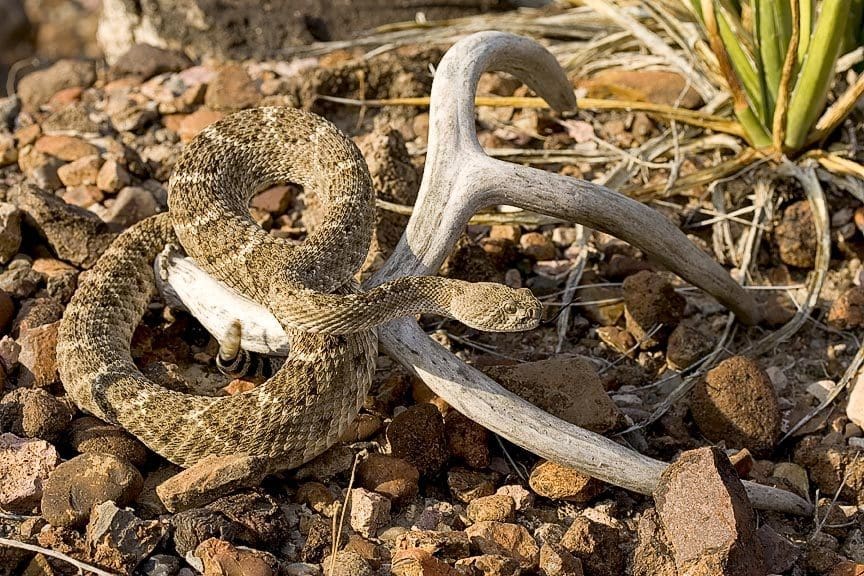
The Western Diamondback Rattlesnake ranges from central and western Texas, through southern New Mexico and Arizona, and into southern California. It also extends well into central Mexico. Western Diamondback Rattlesnakes inhabit dry, rocky, shrub-covered terrain where they can conceal themselves inside crevices in the rocks or in mouse holes.1
The Western Diamondback Rattlesnake can be found in over 7 National Parks and many other National Park Service sites.2 Including:
- Big Bend National Park
- Carlsbad Caverns National Park
- Grand Canyon National Park
- Guadalupe Mountains National Park
- Joshua Tree National Park
- Saguaro National Park
- White Sands National Park
SPONSORED ADVERTISEMENT
Western Diamondback Rattlesnake Conservation Status
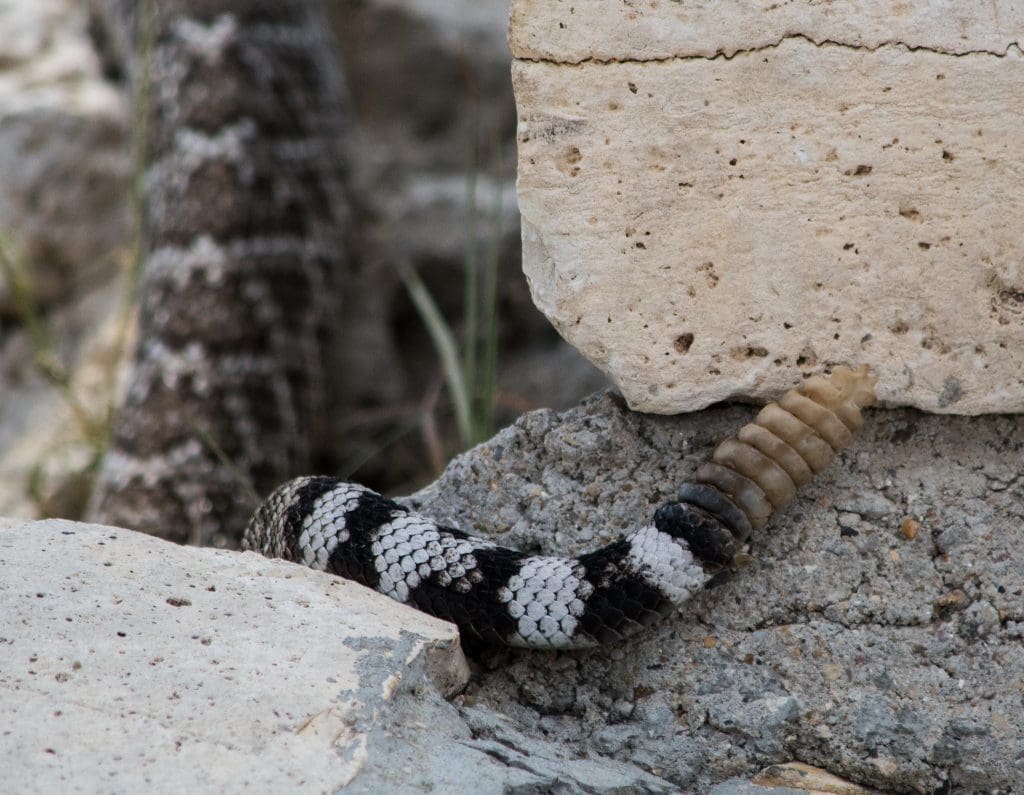
Largely due to the risk and danger of snake bites, rattlesnakes have come to instill paranoia and fear in humans. As a result, there are numerous forms of rattler control, such as bounties, poisons, traps, and the destruction of food supplies and refuges. However, Western Diamondback Rattlesnakes are a highly successful and fertile species, and therefore are not currently threatened by any forms of mass destruction or species control.1
Western Diamondback Rattlesnakes are good at controlling rodent problems. They also keep well in captivity, which makes it a good educational resource in zoos and snake shows. Rattlesnakes are key in Native American culture, in which their flesh, oil, and venom have been used as a food source and as a basis for medicinal preparations for a long time. Rattlesnake skins are regularly used for skin products such as shoes and belts. Rattlesnakes are also prominent on the live-snake market, where they sell for $2 to $3 per foot.1
Western Diamondback Rattlesnake and You
Have you seen a Western Diamondback Rattlesnake in it’s natural environment? Tell us about it in the comments below!
Do you have a picture of these amazing creatures? Share it on social media with us and tag us in your post.
Use the hashtag:
#WildlifeOfTheWeek.
Interested in Wildlife Photography???
Check out this amazing beginners guide from National Geographic:
National Geographic Photo Basics The Ultimate Beginner’s Guide to Great Photography
The above links are provided in this article as affiliate links. Meaning, at no additional cost to you, we’ll earn a commission if you click one and make a purchase. An easy way to help support us if you’re going to buy anyway!
Learn more about all the amazing wildlife in our National Parks and how to safely “Watch Wildlife” on this amazing page with lots of resources from the National Park Service!
Want tips for photographing wildlife? Check out this great article for tips from the National Park Service.
Help support Discover Our Parks by becoming a Patron for as little as $1 a month! Your support will help us continue to provide articles like this and add even more information about our parks to this site.
If you want to make a one-time donation, buy us a coffee!
‘We got some of the above information from the following:
1: Animal Diversity Web – Crotalus Atrox – Western Diamond-backed Rattlesnake
2: NPSpecies – Find Parks Where a Species is Found
Check out these recent posts from Discover Our Parks:
- The Isolated Black-bellied Salamander: Wildlife of the Week – 2023 Week 22
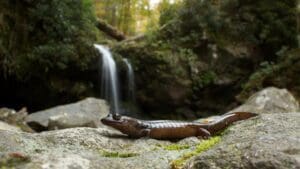
- The Splendid Sandhill Crane: Wildlife of the Week – 2023 Week 21

- The Promising Peregrine Falcon: Wildlife of the Week – 2023 Week 20

- The Intimidating Killer Whale: Wildlife of the Week – 2023 Week 19

- The Swift Fox: Wildlife of the Week – 2023 Week 18
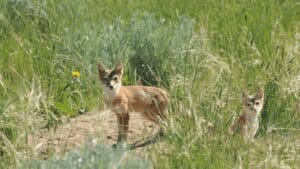
SPONSORED ADVERTISEMENT

